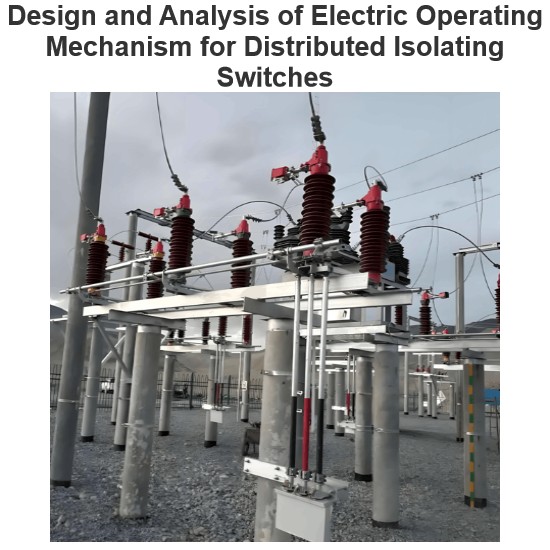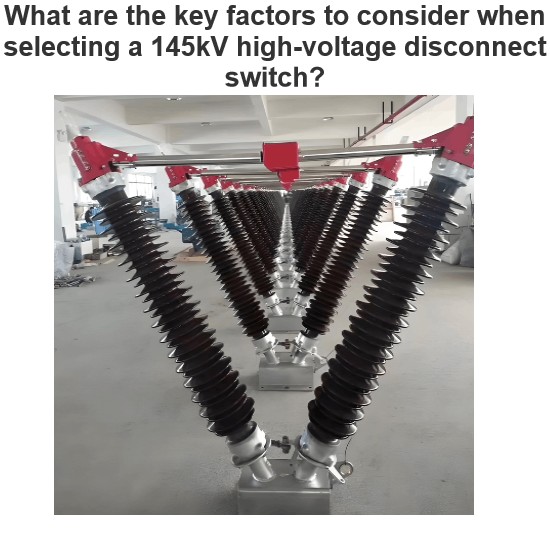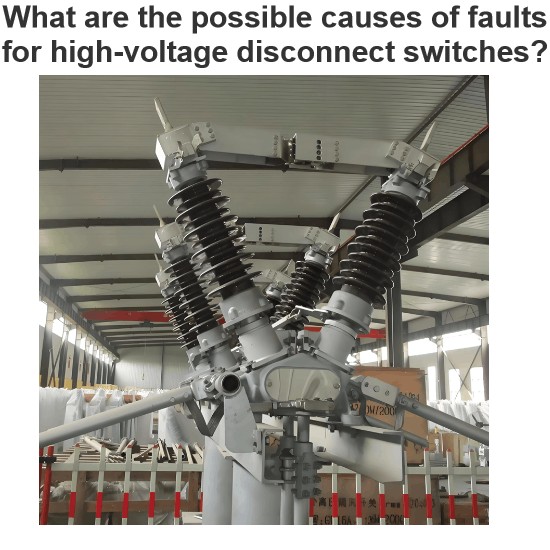High Voltage Disconnect Switch: Practical Applications and Development Trends
1. Introduction
High voltage disconnect switches (HVDs) are pivotal components in electrical power systems. Their fundamental function is to isolate electrical equipment or circuits from the power supply, ensuring safety during maintenance, repair work, or in emergency situations. In a country like Indonesia, with its expanding power infrastructure and diverse geographical conditions, the role of HVDs, especially those rated at 145kV, becomes even more crucial. This article delves into the practical applications of high voltage disconnect switches, with a specific focus on 145kV models in Indonesia, and explores the emerging development trends, including the significance of IP66 protection in the context of international standards such as IEC 60068 - 3 - 3.
2. Practical Applications of High Voltage Disconnect Switches
2.1 Power Generation Sector
In Indonesia, the power generation mix is diverse, including coal - fired power plants, gas - fired power plants, and an increasing number of renewable energy installations such as solar and wind farms.
- Thermal Power Plants: In 145kV coal - fired and gas - fired power plants, high voltage disconnect switches are used to isolate generators, transformers, and other electrical equipment during maintenance. For example, before conducting maintenance on a generator, the 145kV disconnect switch is opened to cut off the power supply from the generator to the grid, safeguarding the maintenance workers from electric shock. This ensures that the power plant can be serviced safely without the risk of sudden electrical surges.
- Renewable Energy Installations: With the growth of solar and wind energy in Indonesia, 145kV disconnect switches play a vital role. In large - scale solar power plants, these switches are used to isolate individual solar panel arrays or groups of arrays. This is useful during the cleaning, inspection, or replacement of solar panels. In wind farms, 145kV disconnect switches are installed between the wind turbines and the grid connection points. They can be used to isolate a faulty wind turbine from the rest of the system, minimizing downtime and ensuring the continuous operation of the remaining turbines.
2.2 Transmission and Distribution Networks
- Transmission Lines: Indonesia has an extensive 145kV transmission network that spans across its islands. High voltage disconnect switches are installed at various points along these transmission lines. They are used to isolate sections of the line for maintenance, repair, or when there is a fault. For instance, if a transmission line is damaged due to a natural disaster like a typhoon in the archipelago, the 145kV disconnect switches can be operated to isolate the damaged section. This allows the maintenance crew to work on the line safely while the rest of the transmission network remains operational, minimizing power outages in other areas.
- Substations: At 145kV substations, high voltage disconnect switches are an integral part of the infrastructure. They are used to connect or disconnect different components such as transformers, circuit breakers, and busbars. In a substation, when a transformer needs to be taken out of service for routine maintenance or due to a fault, the 145kV disconnect switches are used to isolate the transformer from the incoming and outgoing power lines. This provides a clear and safe break in the electrical circuit, ensuring the safety of the substation staff.
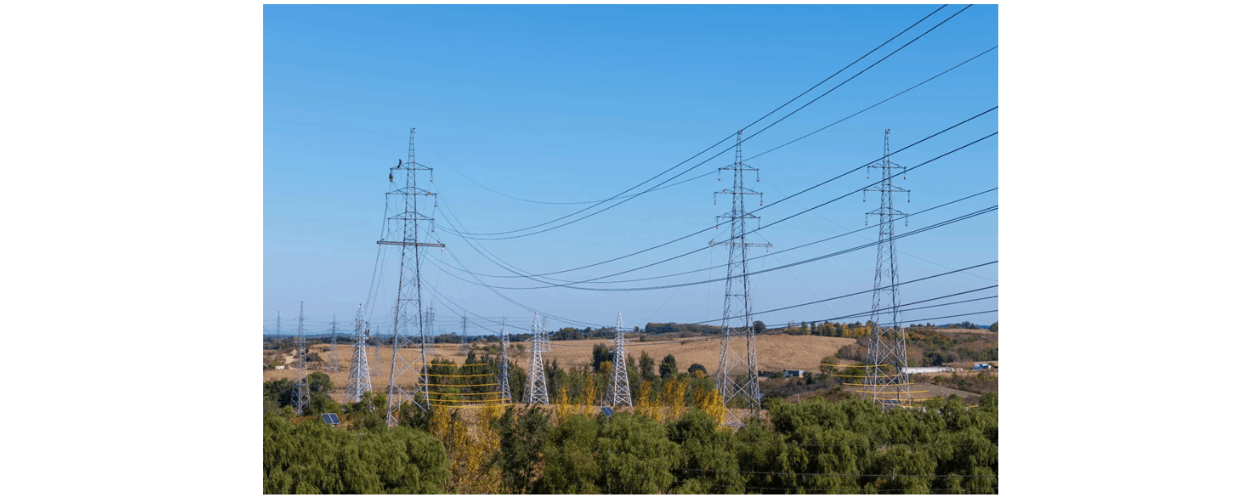
2.3 Industrial Applications
- Large - Scale Industries: Many large - scale industries in Indonesia, such as mining, manufacturing, and petrochemicals, operate on high - voltage power supplies. 145kV disconnect switches are used within these industrial facilities to isolate high - voltage equipment. In a mining operation, for example, high - voltage motors used for large - scale excavators or conveyor systems may be connected to a 145kV power supply. The disconnect switch can be used to isolate these motors during maintenance, repair, or when there is a need to reconfigure the electrical system. This helps in preventing electrical accidents and allows for efficient maintenance of the industrial equipment.
- Industrial Parks: In industrial parks where multiple industries are located, a centralized 145kV power distribution system is often in place. High voltage disconnect switches are used to control the power supply to individual industrial units. This enables each unit to be isolated for maintenance or in case of an internal electrical problem, without affecting the operation of other industries in the park.
3. Significance of IP66 - Rated High Voltage Disconnect Switches in the Indonesian Context
3.1 Protection Against Harsh Environmental Conditions
- Tropical Climate Challenges: Indonesia has a tropical climate with high humidity levels, often exceeding 80% in many regions. In addition, it experiences heavy rainfall throughout the year, especially during the monsoon season. IP66 - rated high voltage disconnect switches are designed to withstand these conditions. The IP66 rating ensures that the switch is dust - tight (the first digit '6' indicates complete protection against dust ingress) and can withstand powerful water jets from any direction (the second digit '6' indicates water jet protection). This protection is crucial as dust and water can cause corrosion and electrical malfunctions in the switch. For example, in coastal areas of Indonesia where salt - laden air and high humidity prevail, an IP66 - rated 145kV disconnect switch can prevent the ingress of salt particles and water, which could otherwise corrode the metal components of the switch and compromise its electrical insulation.
- Protection Against Natural Disasters: Indonesia is prone to natural disasters such as typhoons, floods, and earthquakes. During a typhoon, strong winds can carry debris, and heavy rainfall can lead to flooding. An IP66 - rated high voltage disconnect switch can protect its internal components from damage caused by flying debris and water submersion. In the event of an earthquake, the switch's robust construction, in combination with its IP66 protection, can help it withstand vibrations and potential water - related hazards, ensuring that it remains operational or can be easily restored to service after the disaster.
3.2 Compliance with International Standards
- IEC 60068 - 3 - 3: The IEC 60068 - 3 - 3 standard provides guidelines for environmental testing of electrical equipment. IP66 - rated high voltage disconnect switches comply with the requirements of this standard, which is recognized globally. In Indonesia, as the country aims to integrate its power infrastructure with international best practices, the use of IP66 - rated switches that adhere to IEC 60068 - 3 - 3 becomes important. This compliance ensures that the switches can perform reliably in the local environmental conditions while also meeting international quality and safety benchmarks. For example, when international power companies invest in or collaborate with Indonesian power projects, they expect the use of equipment that meets these international standards. The use of IP66 - rated 145kV disconnect switches compliant with IEC 60068 - 3 - 3 can enhance the credibility of Indonesia's power infrastructure in the eyes of international partners.
4. Development Trends of High Voltage Disconnect Switches
4.1 Smart Grid Integration
- Remote Monitoring and Control: As the concept of smart grids gains momentum globally, including in Indonesia, high voltage disconnect switches are evolving to be more intelligent. Future 145kV disconnect switches will be equipped with sensors and communication modules. These sensors can monitor parameters such as temperature, contact resistance, and mechanical stress in real - time. The data collected can be transmitted wirelessly to a central control station. For example, if the temperature of the switch contacts starts to rise abnormally, indicating a potential over - load or poor contact, the control station can receive an alert. Operators can then remotely control the switch to open or close, depending on the situation, without having to send a maintenance crew to the physical location of the switch. This not only improves the efficiency of power system operation but also reduces the response time to potential problems, enhancing the overall reliability of the grid.
- Integration with Grid Automation Systems: High voltage disconnect switches will be integrated into grid automation systems. They will be able to communicate with other smart grid components such as circuit breakers, transformers, and power meters. In a smart grid, when there is a sudden change in power demand or a fault in a particular section of the grid, the disconnect switches can receive signals from the grid automation system. Based on these signals, they can automatically reconfigure the power flow in the grid. For instance, if a fault occurs in a distribution line connected to a 145kV substation, the disconnect switches can be programmed to isolate the faulty section while redirecting power to alternative paths, ensuring continuous power supply to consumers.
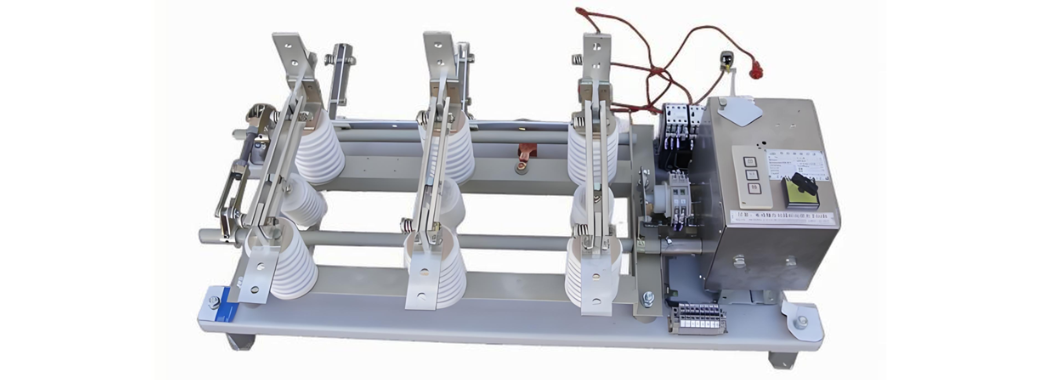
4.2 Compact and Lightweight Design
- Space - Saving in Substations: In urban areas of Indonesia, where space is at a premium, there is a growing need for compact and lightweight high voltage disconnect switches. Future 145kV disconnect switches will be designed using advanced materials and manufacturing techniques to reduce their size and weight without compromising on performance. For example, the use of composite materials with high - strength and excellent electrical insulation properties can replace traditional metal components in the switch construction. This not only makes the switch lighter but also more compact. In a 145kV substation located in a crowded urban area, a compact disconnect switch can be installed more easily, saving valuable space that can be used for other essential substation equipment.
- Ease of Installation and Maintenance: Compact and lightweight disconnect switches are also easier to install and maintain. They require less effort and equipment to transport to the installation site. During maintenance, they can be handled more conveniently, reducing the time and cost associated with maintenance operations. For example, in a remote area of Indonesia where access to heavy - duty installation equipment is limited, a lightweight 145kV disconnect switch can be installed more quickly and with less logistical support.
4.3 Enhanced Reliability and Safety Features
- Advanced Insulation Materials: To meet the increasing demand for higher voltage levels and more reliable operation, high voltage disconnect switches will use advanced insulation materials. These materials will have better electrical insulation properties, higher resistance to temperature and humidity, and improved mechanical strength. For example, the development of new ceramic - based or polymer - based insulation materials can provide enhanced insulation performance in 145kV disconnect switches. These materials can withstand higher electrical stress, reducing the risk of electrical breakdown and improving the overall reliability of the switch.
- Improved Mechanical Design: The mechanical design of high voltage disconnect switches will be optimized to enhance their reliability and safety. Future switches will have improved contact mechanisms that can withstand more frequent operations and higher electrical currents. The operating mechanisms will be designed to be more robust, with better - controlled opening and closing actions. For example, the use of spring - assisted or magnetic - assisted operating mechanisms can ensure more consistent and reliable switching operations. In addition, safety features such as interlocks to prevent accidental operation and arc - suppression devices to reduce the risk of electrical arcs during switching will be further improved.
5. Conclusion
High voltage disconnect switches, especially those rated at 145kV, have diverse and critical practical applications in Indonesia's power sector, including power generation, transmission and distribution, and industrial applications. The significance of IP66 - rated switches in protecting against the country's harsh environmental conditions and complying with international standards cannot be overstated. Looking ahead, the development trends of high voltage disconnect switches, such as smart grid integration, compact and lightweight design, and enhanced reliability and safety features, will play a crucial role in meeting the growing energy demands of Indonesia while ensuring the efficient and reliable operation of its power infrastructure. As Indonesia continues to invest in its power sector, the adoption of these advanced high voltage disconnect switches will be essential for a sustainable and resilient energy future.




